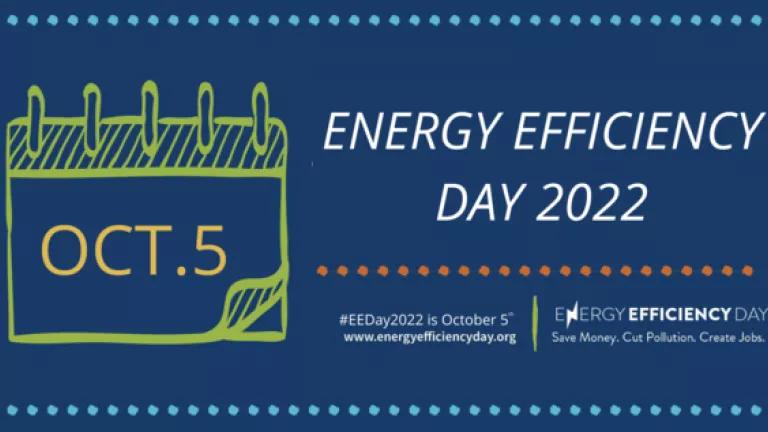Governor Wolf Says Pennsylvania Will Join RGGI. Now What?
Governor Wolf wants Pennsylvania to participate in the Regional Greenhouse Gas Initiative, and that's a big deal.

Governor Tom Wolf has directed the Pennsylvania Department of Environmental Protection to propose a regulation to cut carbon pollution from the state's power plants. Under Executive Order 2019-07, the DEP's proposal must also enable Pennsylvania to participate in the Regional Greenhouse Gas Initiative, or RGGI. This blog briefly explains how RGGI works, summarizes Wolf's Executive Order and its legal basis, and outlines what needs to happen before carbon limits take effect in the Commonwealth.
RGGI
As my colleague Bruce Ho explains in detail here, RGGI is a "cap and invest" initiative to cut carbon pollution from power plants in the Northeastern and MidAtlantic United States. Currently, nine states participate in RGGI: Connecticut, Delaware, Maine, Maryland, Massachusetts, New Hampshire, New York, Rhode Island, and Vermont. New Jersey is set to join the program on January 1, 2020, and Virginia has finalized a regulation that will allow it to participate in RGGI starting on January 1, 2021.
RGGI's emissions cap, or "budget," is a declining limit on the total amount of carbon dioxide pollution that can be emitted from the power plants in the RGGI states. The 2019 cap for those states is 80.2 million tons (by way of context, Pennsylvania's power sector alone emitted almost 82 million tons of carbon pollution in 2018), and the cap is scheduled to tighten by 2.5 percent next year, and then 3 percent per year between 2021 and 2030. When a new state wants to join RGGI, it must negotiate a new cap with the existing states, and the new cap must be comparable in stringency to the old cap, taking into account the new state's current and projected emissions. New Jersey recently negotiated to enter RGGI in 2020 with an 18-million ton increase to the overall RGGI cap. (The total 2020 cap will be 96.2 million tons).
The "invest" part of RGGI is an extension of the "polluter pays" principle. Under RGGI, power plants must buy one “allowance” for every ton of carbon dioxide they emit. Most allowances are purchased at quarterly auctions held by RGGI, Inc., a non-profit corporation that administers the RGGI market; in addition, allowances can be bought and sold on secondary trading markets. Auction proceeds are then returned to states for them to invest in ways that benefit consumers, including energy efficiency, renewable energy projects, and bill rebates for consumers. (A Memorandum of Understanding signed by the current RGGI states provides for at least 25 percent of proceeds to be invested in consumer benefits.) This week, RGGI, Inc. released a report that summarizes how the nine current RGGI states invested their auction proceeds in 2017. Here's what they did:
Governor Wolf's Executive Order
Wolf's Executive Order, titled "Commonwealth Leadership in Addressing Climate Change through Electric Sector Emissions Reductions," directs the DEP to propose a regulation that will cut carbon pollution from power plants and enable the state to participate in RGGI. Specifically, the proposal must set an emissions cap that is "consistent in stringency to that established in the RGGI participating states," provide for the auction of carbon allowances, and be "sufficiently consistent" with the RGGI Model Rule that the other RGGI states will agree for Pennsylvania allowances to be traded on the RGGI markets.
In crafting the proposal, the DEP must conduct a "robust public outreach process" to ensure the program "results in reduced emissions, economic gains, and consumer savings." It must also consult with the PJM Interconnection, which designs the competitive electricity markets that determine what power plants get built and run in Pennsylvania. The DEP must submit its proposal to the state Environmental Quality Board, (a separate, though related, agency that promulgates the rules administered by the DEP) by July 31, 2020.
Can the Governor Do This?
Yes, he can. Not only does Pennsylvania's Air Pollution Control Act already give the DEP unambiguous authority to regulate carbon pollution from power plants; the state actually has a duty to regulate climate pollution under Article I, Section 27 of the state Constitution. Pennsylvania's failure to regulate carbon pollution to date is a function of politics, not legal authority and duty.
It is less certain whether the administration has unfettered control over how to spend the proceeds from an auction of carbon allowances. (Assuming, that is, that whatever regulation is finalized includes an auction mechanism at all. The Executive Order does require the DEP to include one in its proposal, but a final rule could use an alternative means of distribution).
In the current RGGI states, proceeds are invested in clean energy and other consumer benefits—and this contributes significantly to RGGI's success. Investments in energy efficiency and renewables, for instance, create a virtuous circle: they lower demand for fossil electricity and, in turn, demand for carbon allowances, thereby reducing the price of allowances and overall program costs. Investments in customer bill assistance programs, meanwhile, protect states' poorest residents and help create a more equitable and stable society.
Modeling by NRDC suggests that the auction of carbon allowances by Pennsylvania in RGGI could yield more than $200 million per year, on average, between 2021 and 2030. (The actual amount would depend on the how much allowances sell for, at auction). That raises an important questions. How does Governor Wolf want to spend this money? Assuming the General Assembly may have a say in the matter, how do Republican leaders want to spend the money? Will the investments help establish a clean energy economy in Pennsylvania, and ease the transition for workers and communities who are affected by it? Will they address the needs of communities of color and other communities historically overburdened by pollution?
From Executive Order to Proposed Rulemaking ... to Final Rule?
July 31, 2020, the deadline for DEP to present a carbon limits proposal to the Environmental Quality Board, is more than nine months away. That time is intended for the DEP to conduct a "robust public outreach effort," vet concepts and language through its various advisory committees and councils, such as the Air Quality Technical Advisory Committee and Small Business Compliance Advisory Committee, and negotiate an emissions budget with the other RGGI states.
After the DEP's proposal is presented to the EQB, the EQB will vote on whether to advance it into Pennsylvania's formal regulatory rulemaking process under the Regulatory Review Act (RRA). During this process, which can last more than two years, the public has additional opportunities to comment, and the DEP can make revisions based on those comments. Then, if the revised proposal is approved by the state Independent Regulatory Review Commission, the General Assembly can vote to "disapprove" it, in which case the Governor can veto the disapproval and the General Assembly can try to override the veto. Absent disapproval, the proposed rulemaking becomes a legal regulation.
The stakes are high: Modeling by NRDC has found that without carbon limits, carbon pollution from Pennsylvania's power sector is likely to rise in the years ahead. It's also found that carbon limits, by themselves, aren't enough to create a sustainable clean energy future for Pennsylvania: it's critical that limits be paired with stronger efficiency and renewables standards. There's a lot to do, then. Let's get started.



